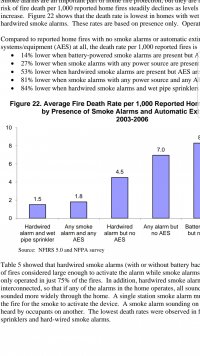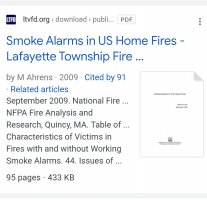The issue I always have with the SFD sprinkler issue is that I really question how many of the systems will be still in working order after 10 years.
This is not a single solution problem. Sprinklers are just one of many solutions. Others include more sophisticated detection and alarm systems and encapsulating lightweight building materials.
I think all of us would agree, the best solutions are the ones that require no interaction by the building occupant.
I'm reminded of when I was an energy advisor working for the federal government here in Canada. Mechanical ventilation systems have been required here for some time and most of the homes I went into had theirs turned off. Their reason? It's too expensive. The funny thing was, these were all heat recovery ventilators. Most of them cost around $100 a year to operation (both operate the fans and re-temper the outside air). These people usually had major issues with indoor air quality. In a couple of cases, they had serious issues with mold. So, they spent about $5,000 each to save the $100 a year. People don't make good decisions. People will defeat the operation of sprinklers or simply will allow them to fall into dis-repair, resulting in expensive systems that do absolutely nothing.
I feel it is most important to understand what the problem is that we are trying to solve. Is it that the house and contents burned? No. We can build a new house and for the most part, you can buy more stuff. It is the loos of life that is the issue. As Mark pointed out, it is very unlikely that we can prevent all deaths in buildings.
When we broached the issue of sprinklers in SFDs here, we looked at the most recent major additions to the code: energy efficiency. Before this section made it into the code, we had numerous people constructing energy efficient homes, so we knew there was a perceived value. Sprinklers on the other hand? Not a single one. I had houses built by firefighters on their days off. Houses built for fire fighters. One even built for the deputy chief of the fire department. Not a single house had a sprinkler in it. But these same people turned around and told us this should be a requirement. How can I inform my elected officials that this should be enacted if the people who are pushing for it do not do it?


